The lovely Alissa Ward has agreed to share her hiking self-rescue tale for this rescue stories series. In 2020, she was living her best life in Tasmania at the bottom of Australia. But things took a turn during what was meant to be an easy hiking trip with a friend.
Thanks so much for agreeing to write your self-rescue story for me Alissa. I still admire the grace and resilience you went through your recovery with, and appreciate all the free education you share. (If you’re not already, go follow Alissa on Instagram – she’s an amazing human).
Warning: this article really isn’t for the squeamish.
Self-Rescue with One Eye
In October 2020, a friend, Caity, and I started out on what was meant to be a quick overnighter deep in Tassie’s South West National Park. It quickly turned into a story I’ll have with me forever.
The hike was only about 7km return, but with about 750m of elevation gain it’s pretty safe to say she’s steep! We climbed up to beautiful views but then, despite the clear forecast, clouds started coming in. It started raining and the track became quite slippery.
The Slip
At one point, I was climbing up a muddy section supported by wooden beams. I suddenly lost my footing. With the weight of my overnight pack on my back, I started falling to the side of the track. Face first.
Unfortunately, I landed not on my hands, but with my right eyelid. Right onto a small stick which punctured through the skin of my eyelid. And that’s when everything went black.
I yelled to Caity (who was about 50m behind me) that I thought something was wrong. (Something was in fact, very wrong).
While she came hurrying up the trail, I felt around my eyelid. The stick had come out when I stood back up, but my eyelid was shut and wasn’t opening … and my eyeball felt like it was in a different place compared to my other (intact) eye. To clarify; the stick never lodged into my eyeball. It went through my eyelid and above my eyeball. But it did move where my eyeball sat in its socket.
Now, if anyone has friends in the medical field, you know they’re pretty quick to switch on, even when off-duty. That’s exactly what happened here. Caity was a paramedic and she quickly assessed my situation. I had low pain levels (thanks to adrenaline), but there was some pretty serious pressure going on in my head. I thought we had two options:
a) Set up camp and try to sleep it off
b) Go back down the mountain
I opted to set up camp and try to sleep “it” off.
Dear readers, if you puncture your eyelid (or anything really) and decide to “sleep it off”, your hiking companion should step in to overrule your adrenaline-induced decision-making abilities. Thankfully that’s what Caity did.
Self-rescue
Caity quickly realised that she wasn’t going to be able to properly assess my injury while on a mountain. I was young (23 at the time) and eyes are a vital organ, so we needed to get down and seek proper care.
To deal with my eyelid, Caity grabbed my first aid kit, placed gauze over my eye and then wrapped this on my head. I could go hands-free down the mountain, and the bandage reduced bleeding from the puncture. Unfortunately, there was no phone reception. We hadn’t taken a personal locator beacon (PLB) of any kind … which was a big take-away lesson for me.
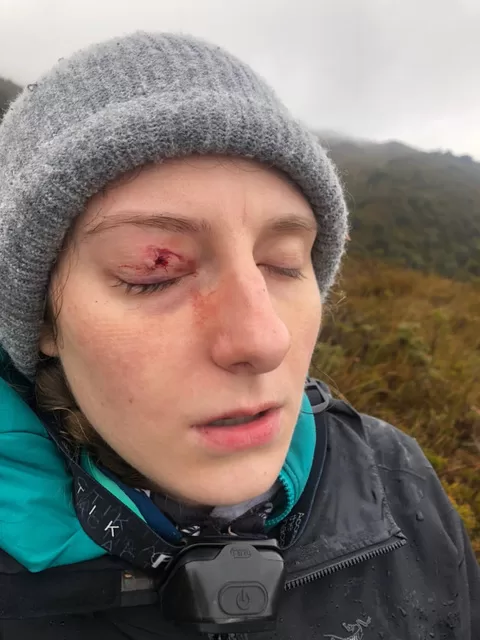
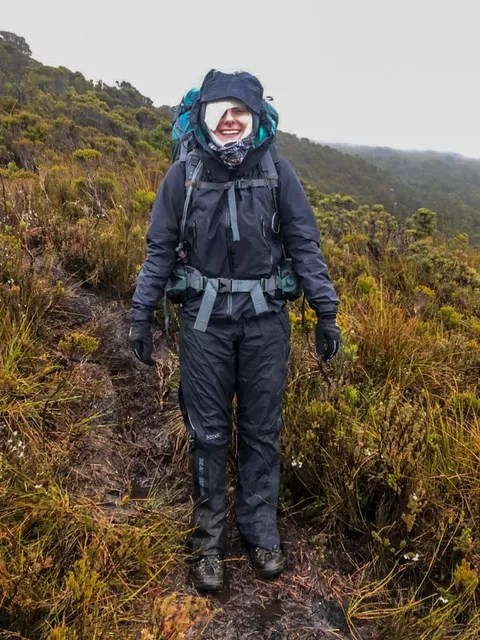
In classic Tasmania fashion, the weather turned as we were about to descend. We put on our rain gear, and began slipping and sliding down the mountain. Caity would later tell me that she had no idea how I made it down the mountain in those conditions, with incredibly impaired depth perception throughout a very root-filled trailed. In all honesty, I’m not sure how I made it either. I just kept following her footsteps until we were back at my car. It was raining pretty heavily at some points and even decided to snow. It just goes to show that a mountain owes you nothing, so best to be prepared for any situation.
Heading to hospital
Next lesson: if you drive manual, make sure at least one other person in your party can also drive manual. You know just in case of you impale yourself and are unable to drive back. Luckily, Caity could drive a manual.
Once I got to the car, changed into dry clothes and laid down in the passenger seat, a persistent pain and nausea set in. I couldn’t watch the road with one eye, or I would get car sick, so I had to lay down with both eyes closed for the three hour drive back to Hobart’s ER… on a Saturday night.
Being in the ER is a bit of a blur. I do remember the on-call ophthalmologist took me into another room and removed pieces of bark from my eye. One piece still remains to this day for anyone curious. This process was about four hours of tests and then waiting. Test some more, check the pressure, then wait again.
I very luckily had incredible hospital staff. Once they realised I wouldn’t be able to see much, they made sure to talk me through everything they were doing to help ease my nerves.
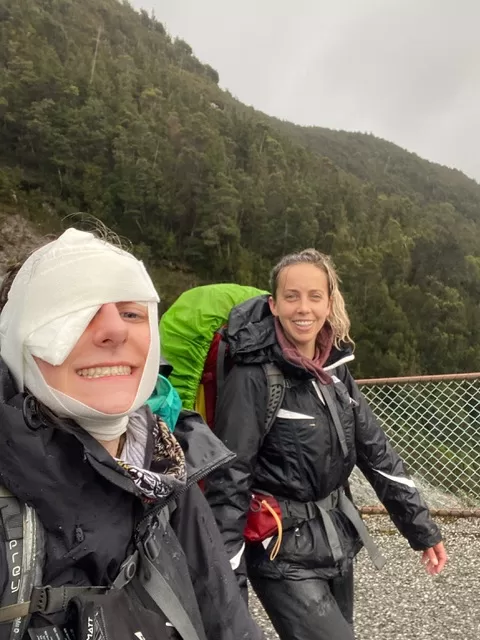
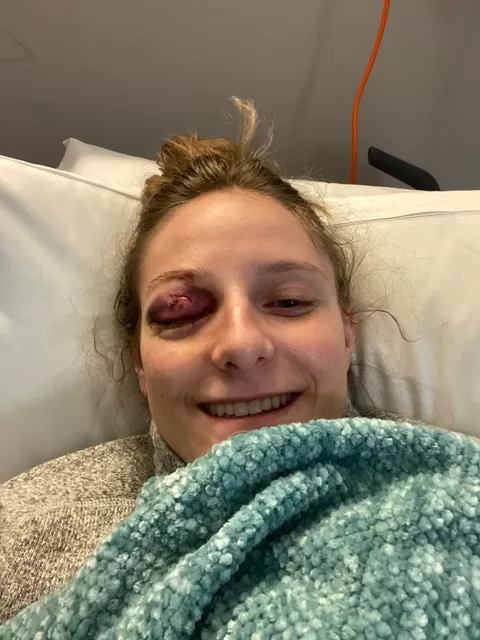
Long recovery
I couldn’t open my eye for about 4.5 weeks. At first the doctors were unsure if this was due to the blunt trauma, or if I had damaged the muscles that opened my eyelid. They thought I might have to wait six months to find out.
I still went on to do the Overland Track while my eyelid was closed 3.5 weeks after the injury (I already had the time off of work and had paid for it, so I managed to get the all-clear from my doctor to do so).
My vision wasn’t impacted long-term. It was when the third doctor I saw told me I had just narrowly missed going blind in one eye, I realised how serious this could have been. If the stick had been only 3mm to the side, I would have lost my eyesight completely.
At this point, I had never broken a bone, so the impact of something like this just wasn’t really on my radar. Once my eyelid did start to open up, my eyes were moving at different speeds, so I had no depth perception and struggled for a while.
After three months I could drive again as I only had double-vision in one really obscure spot (it’s still there, but doesn’t impact me daily). Eight months later I had a procedure done that opened up my right eyelid more so now it doesn’t sag as much, but still isn’t symmetrical with my left.
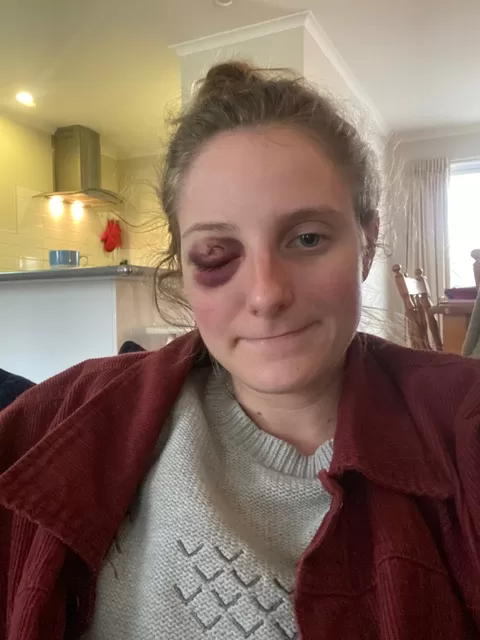
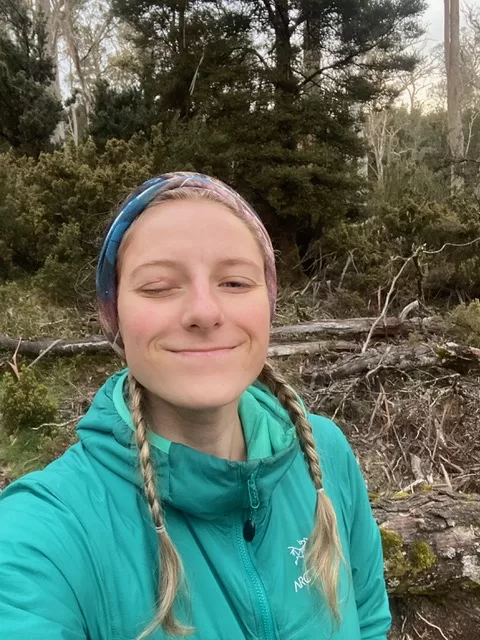
^ Right photo was taken a few weeks post-injury on the Overland Track.
Lessons learnt
This is an incredibly shortened version of the highs and lows that are associated with my injury, but nearly four years later, a lot has subsided. This could have gone very, very differently and I’m grateful to say it didn’t. However, if we had a PLB with us that day, we 100% would have used it on the mountain.
Fluke accidents are just that. Try not to let them scare you away from doing the things you love. Be aware of risks, but don’t become risk averse as a result is the mindset I always took with my recovery.
Hopefully this gives you a look into a very sticky situation and how we managed to get out. When we finally summited the mountain together a few years later, Caity and I made sure to have a PLB with us. It was an amazing trip with beautiful weather and views.
I now carry my InReach on every hike I go on, and tell people where it is in case they have to use it.
My key takeaways:
- Always have a PLB of some sort
- Leave a trip plan with a trusted friend/ family member (as soon as we contacted mine, 24 hours early, she knew something was wrong and was able to meet us at the hospital)
- You never know when a well-stocked First Aid Kit will come in handy
Thanks again Alissa for sharing your incredible self-rescue story! I’m so glad you’ve made such an amazing recovery and been able to get back into all of your outdoor activities with minimal deficits (as the below photos show!). If you’re interested in hearing more about the recovery process, Alissa has saved lots of stories to her Instagram highlights (and while you’re there, hit follow – she’s a genuinely lovely person).
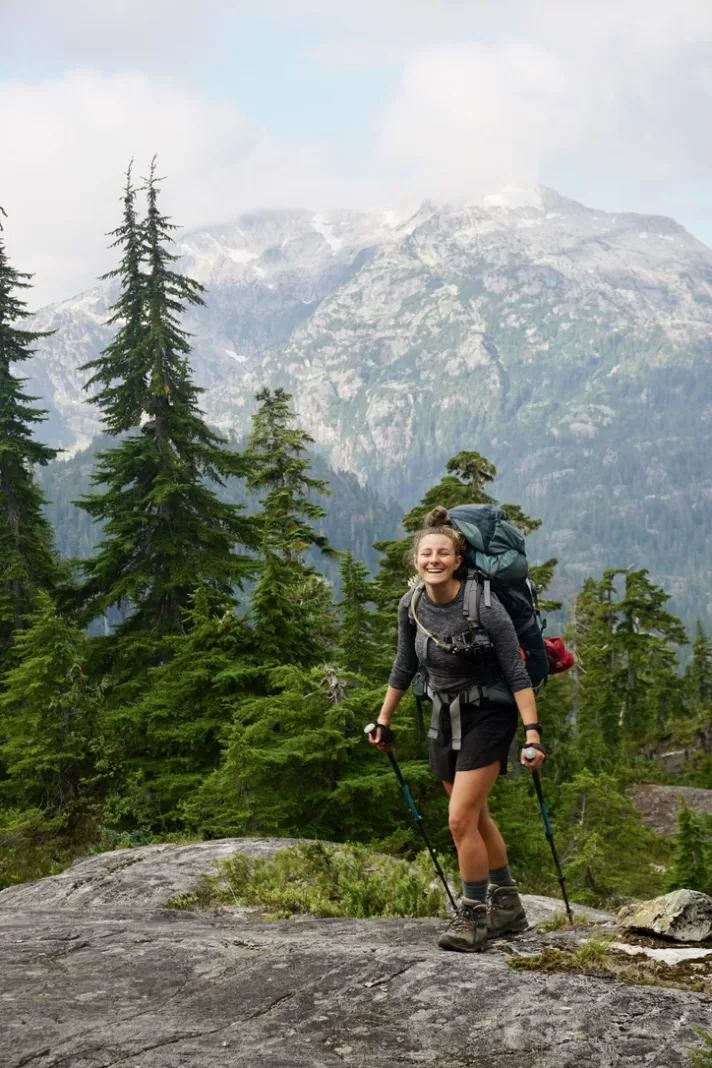
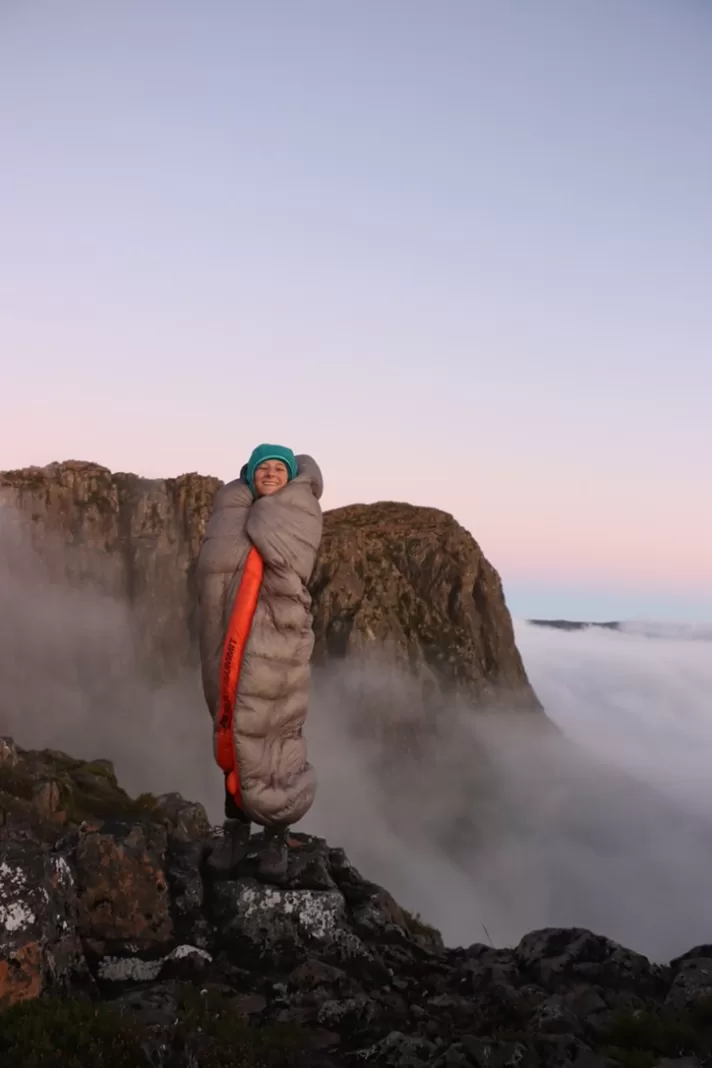


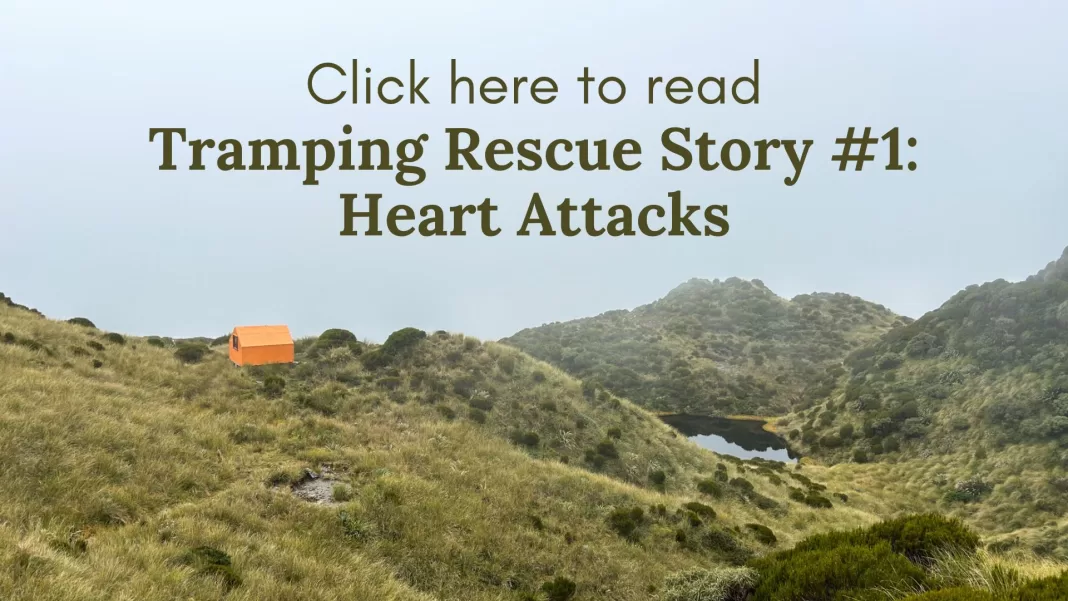
I thought that after having had four major eye surgeries myself that I’d be able to get through this one without grimacing or feeling a bit sick but nope! What luck that it didn’t result in permanent blindness! Thanks for sharing this story, a great reminder of the value of PLBs for all kinds of situations.
I feel like with that history you’d find it worse! Very lucky it wasn’t worse, but also what a freak accident! Thanks for reading!